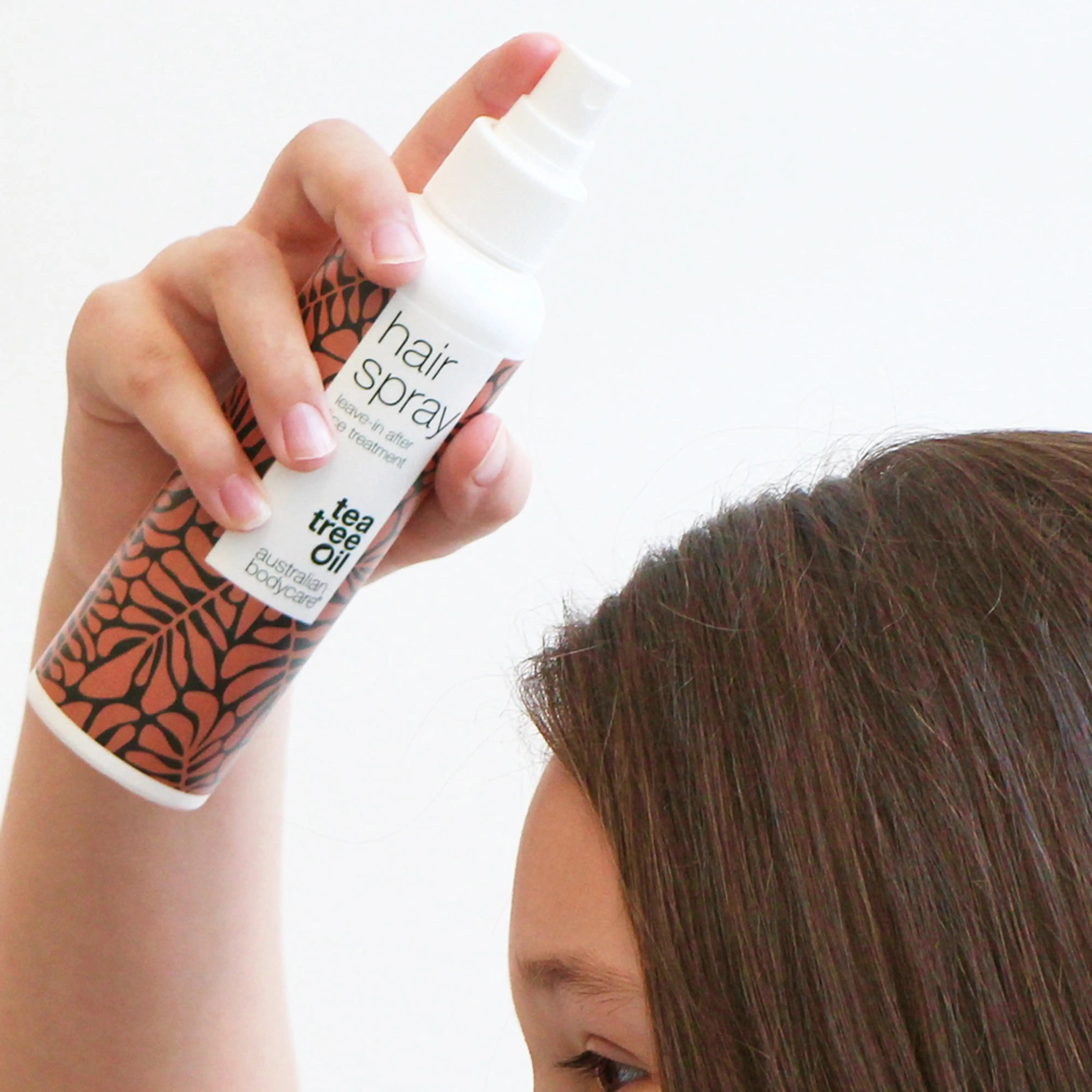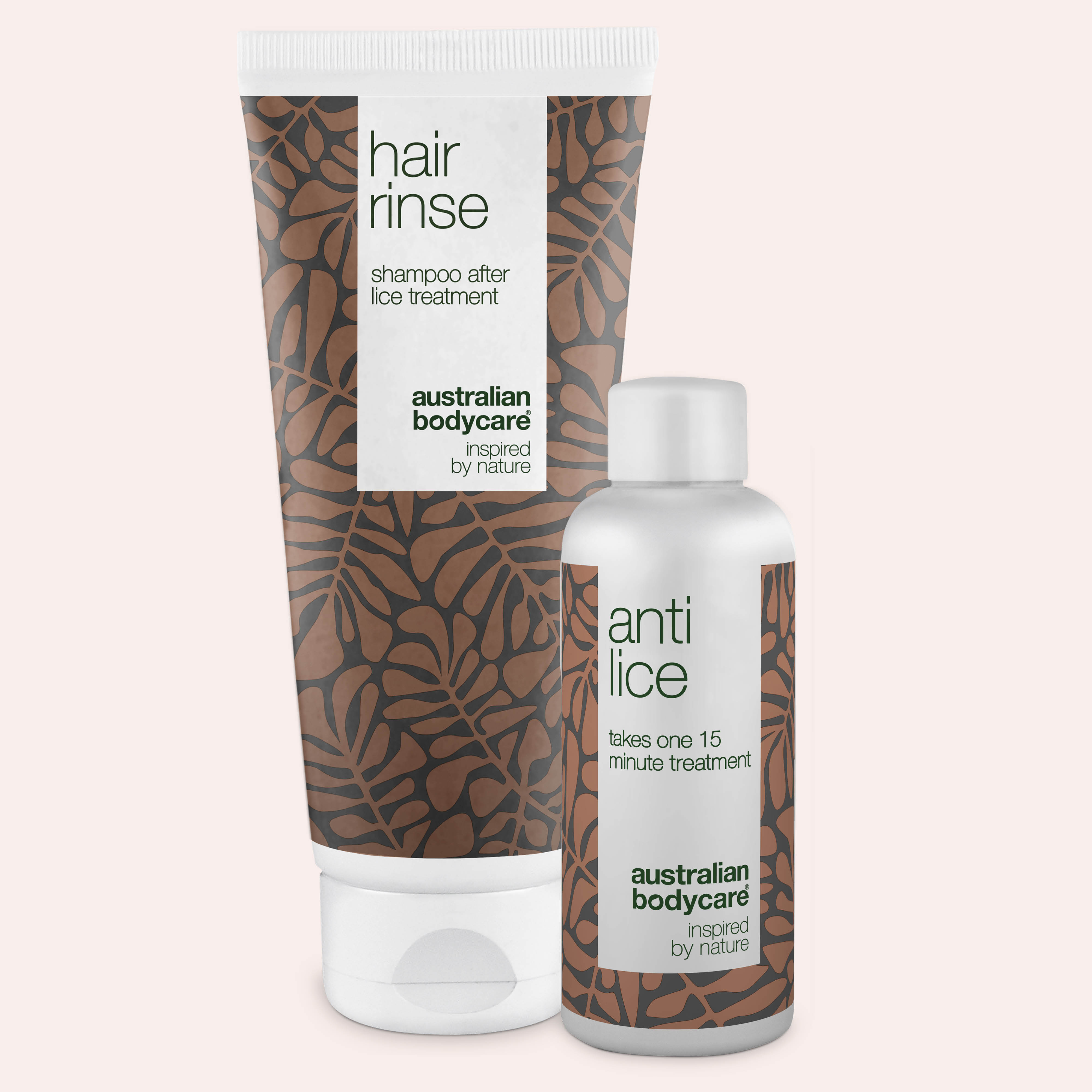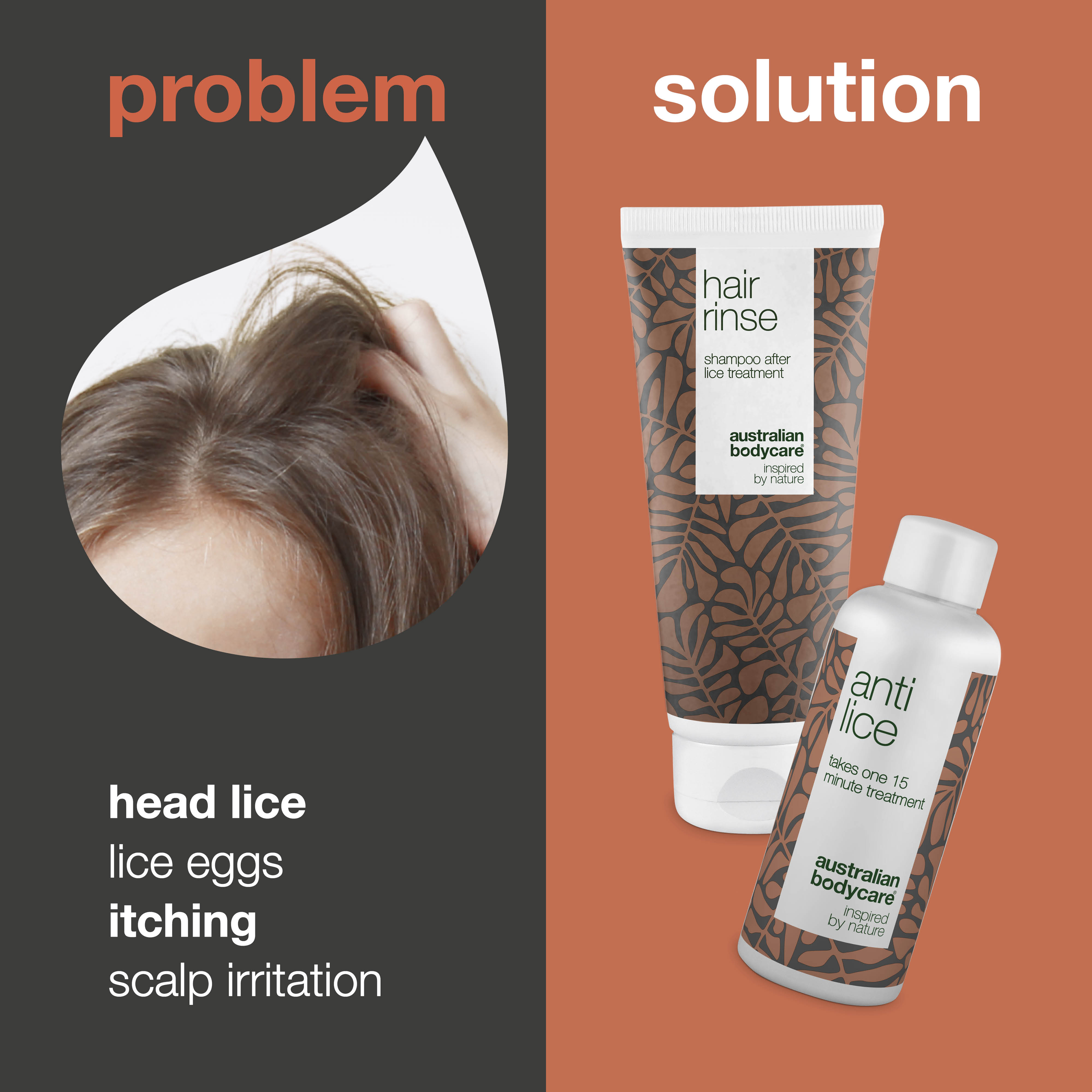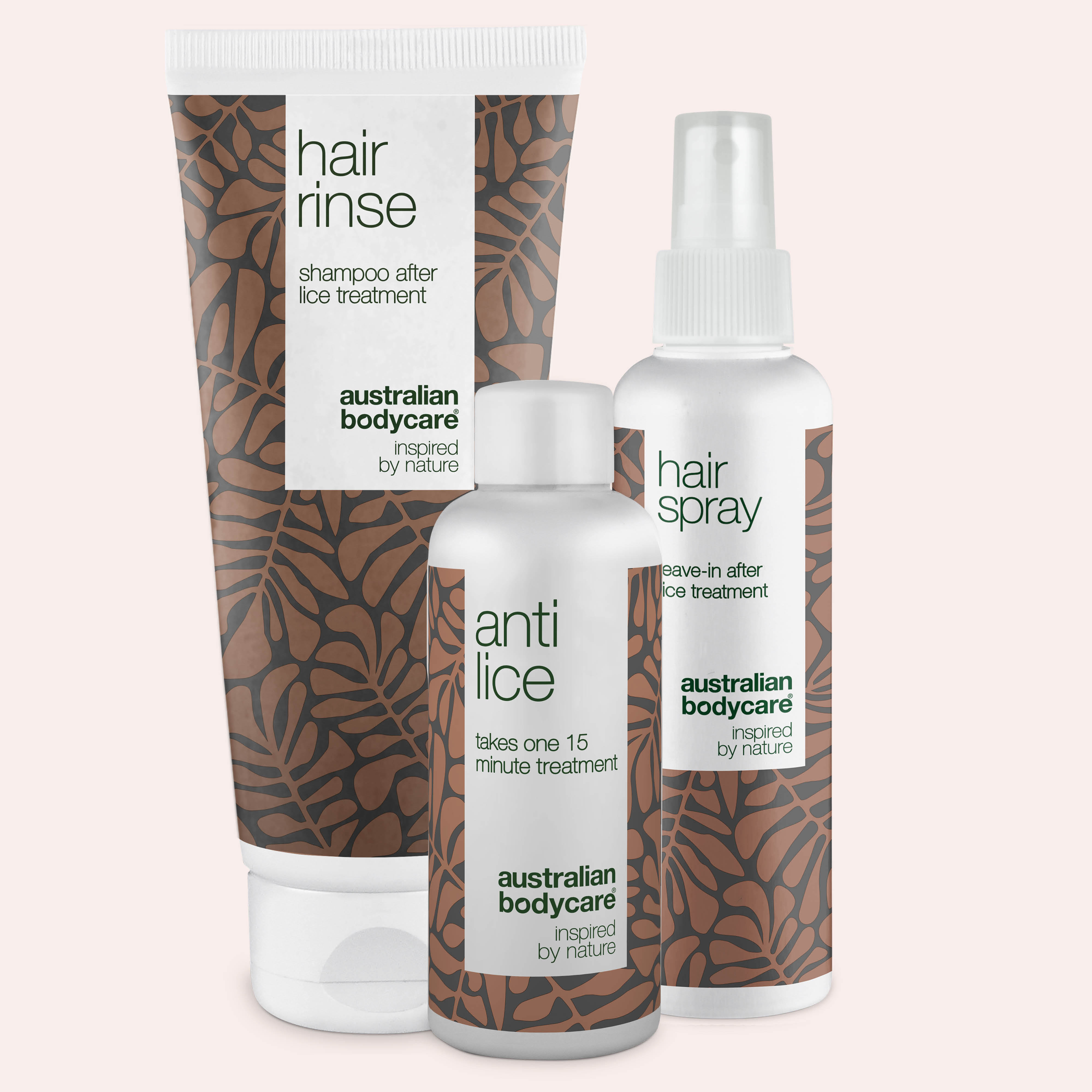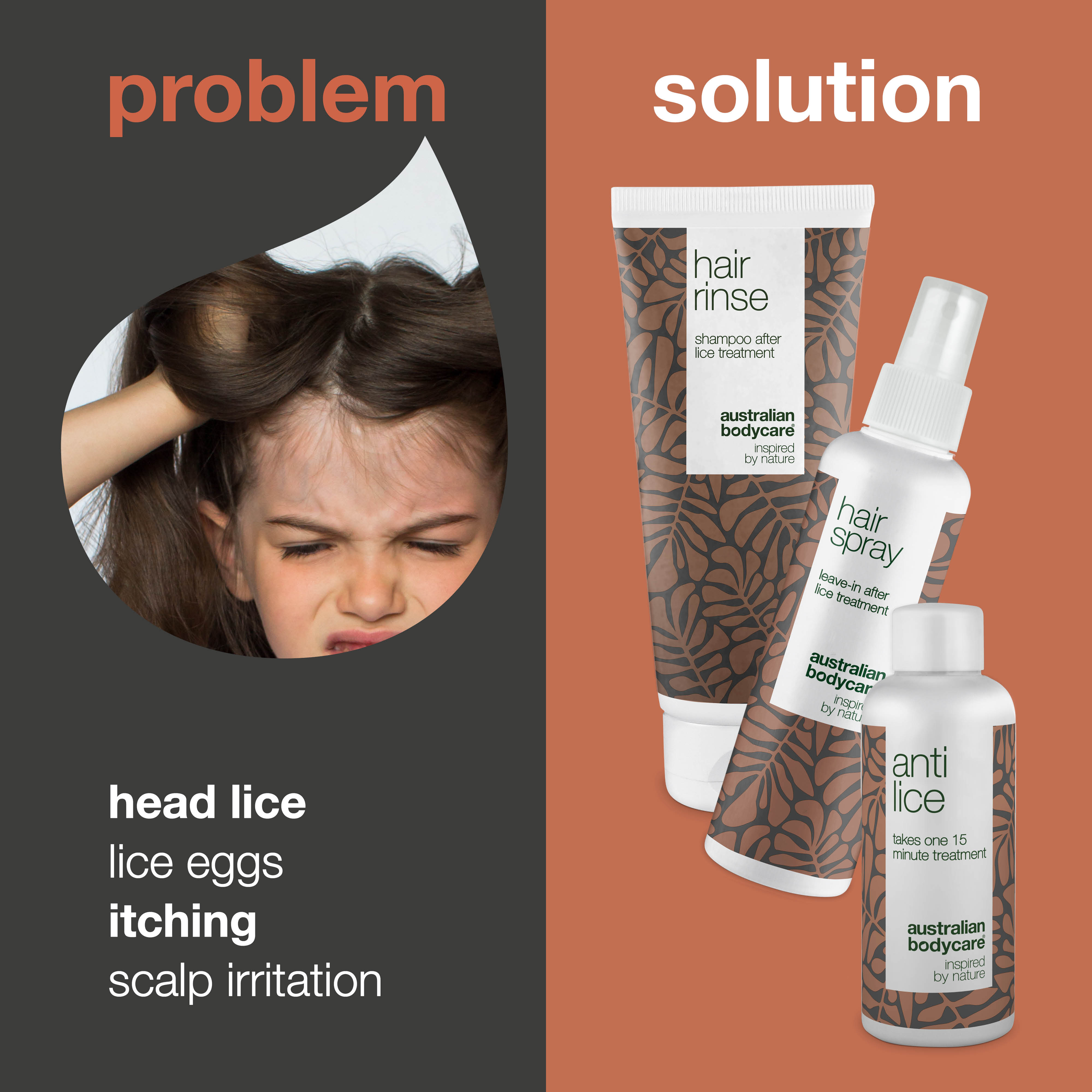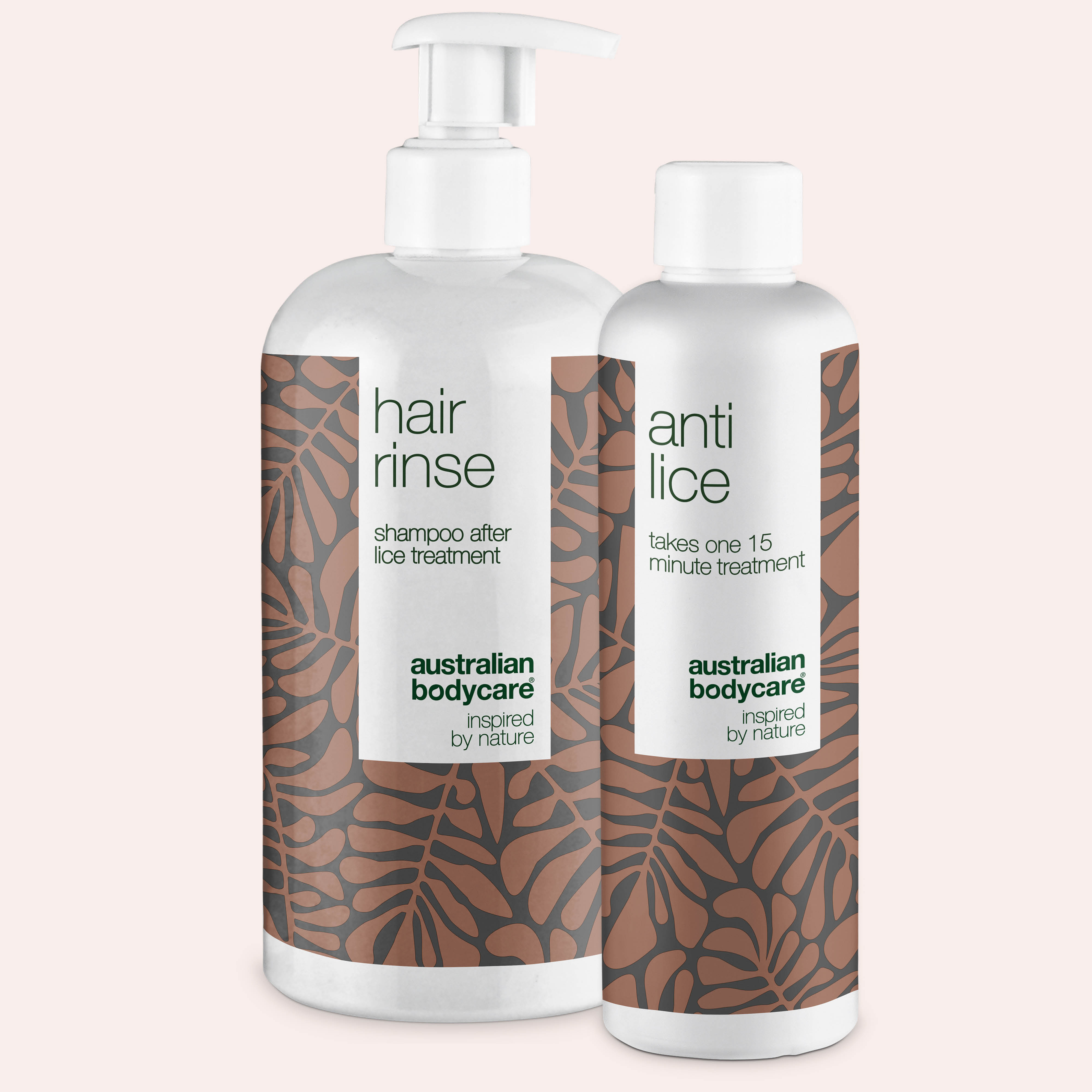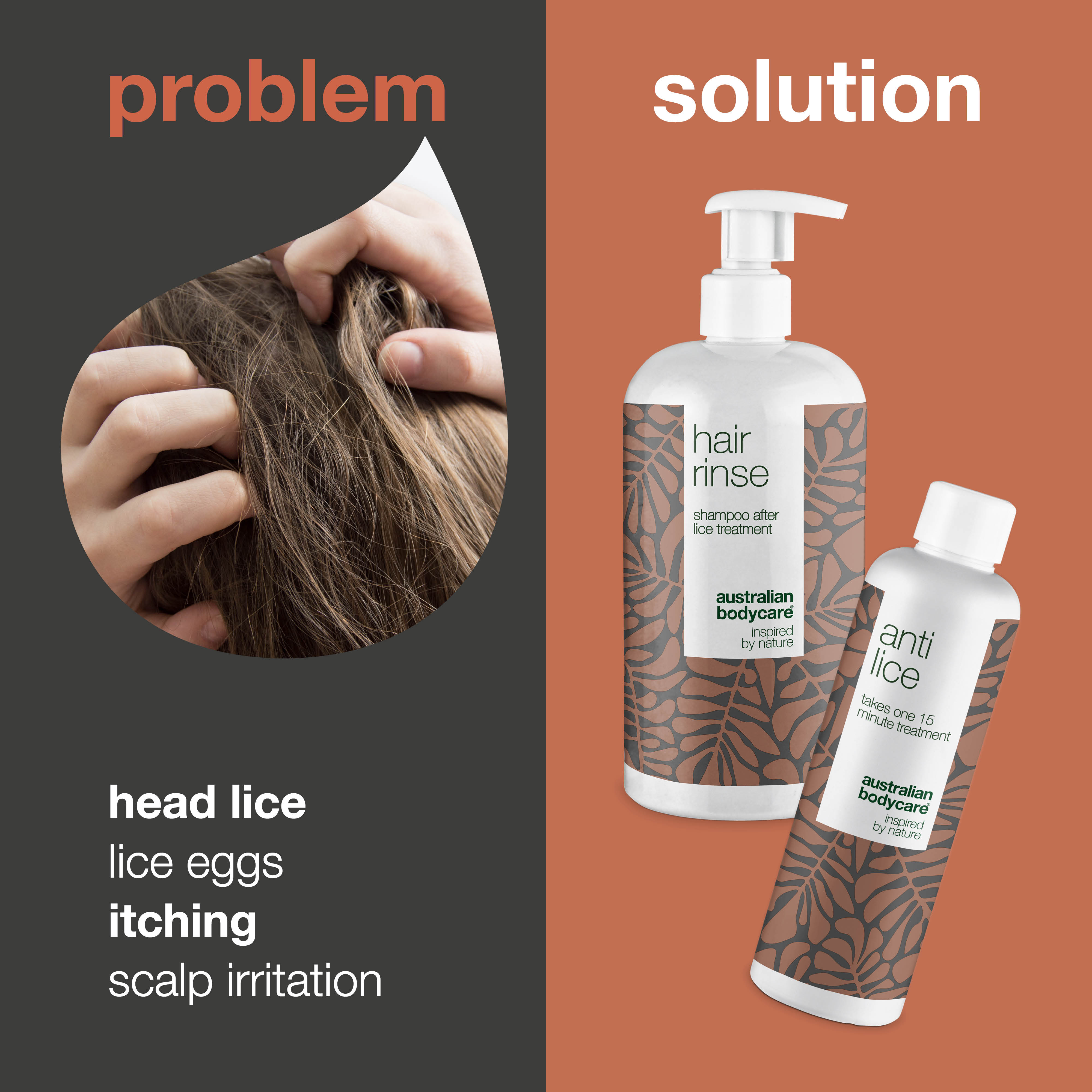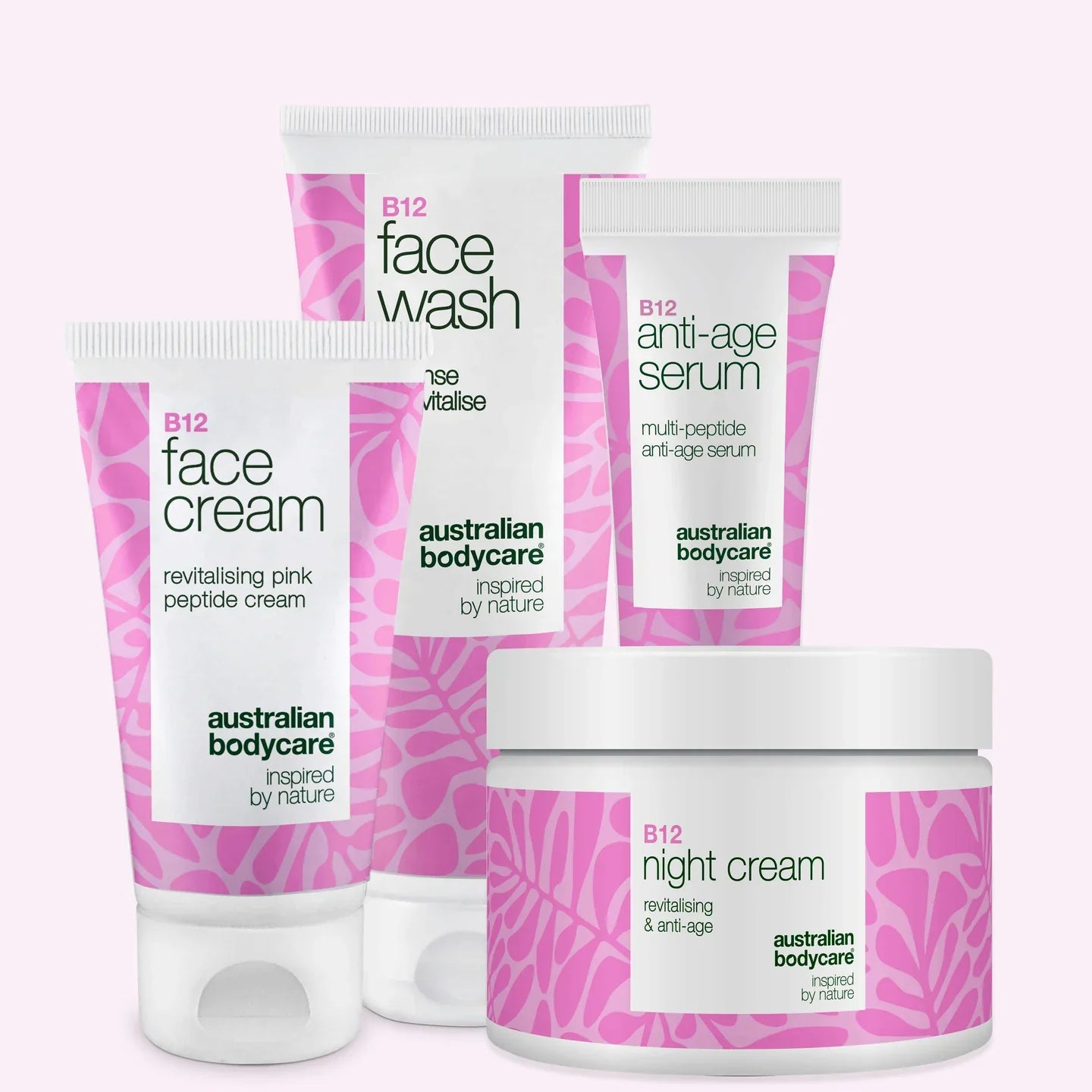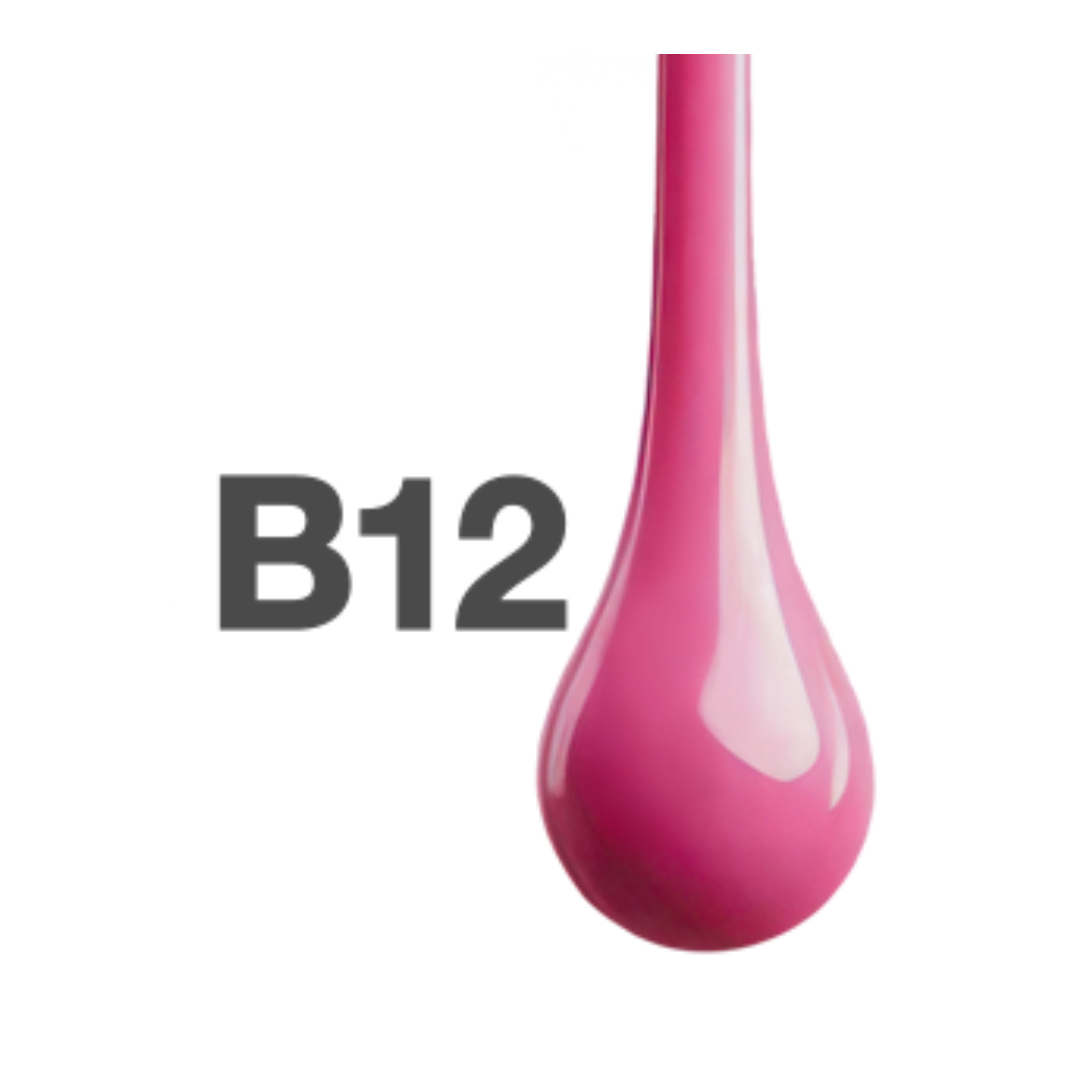How to Use Tea Tree Oil for Lice
Head lice are tiny insects which only live on human scalps, they are a common problem which usually affect young school-age children.
In this article we will have a look at how to identify, treat and prevent head lice as well as how to use Tea Tree Oil as an effective tool for promoting overall scalp health.
Table of contents
Identifying Head Lice
Head lice are very small insects which appear white or a grey-brown colour and live on the scalp. Although harmless, lice can cause discomfort, irritation and frustration if not dealt with early.
The condition is considered contagious as you can become infected with head lice if the insects crawl onto your scalp. You can get head lice through the following ways;
- Touching your head to someone else’s head whose scalp is infested
- By sharing personal hair grooming items such as a comb with someone who has head lice
- By sharing a fabric item after someone who is infected, such as upholstered furniture, bedding and hats.
Typically, children who are in preschool or primary school will have a higher risk of getting head lice as they tend to play close together.
This increased risk also extends to their family members and to those who work in schools or facilities with young children.
It can be difficult to identify when you or a child has lice, as the only reliable way to diagnose an infestation is when you find a living and moving head louse.
Nits, which are the eggs of lice, can easily be mistaken for dandruff – the only difference is that nits cannot be removed by brushing them out or shaking them.
Symptoms of head lice generally includes extreme itchiness on the scalp, the sensation that something is crawling on your scalp and in some cases sores and scabs developing on the scalp as a result of itching.
Head lice need to feed on human blood on an average about every five hours, and their bites, saliva and droppings can make the scalp feel itchy.
Read more About: HOW TO GET RID OF DANDRUFF
Don’t buy Chemical lice treatments
You’ll find lots of chemical lice treatments, some will work well and others your head lice will be resistant to.
The problem is, you could be risking your health. Chemical lice treatments are made from potent chemicals, they’re not designed to be used regularly and even with short term use, may give you side effects.
If you’re reading this to help treat a child who has head lice, you have even more reason to avoid chemical lice treatments.
Helpfully there is an effective, resistant proof, scalp protecting solution: Conditioner and a nit comb.
It’s safe, cheap and the simplest of head lice treatments to use. Slather your hair and scalp in conditioner and comb away. Repeat 4 times over 2 weeks. Job done.
For best effects choose our Tea Tree Oil Conditioner with an off the shelf nit comb.
This solution works on two levels. The conditioner makes your hair very easy to comb and the antibacterial action of Tea Tree Oil helps keep your scalp clean. This is not just hearsay: this is proven by science – keep reading to learn all. Two weeks is all it takes to be naturally free from head lice.
Why use Tea Tree Oil
There have been several scientific research studies which have discovered that the natural plant extract of Tea Tree Oil holds numerous beneficial properties.
Tea Tree Oil is extracted from the Australian native Melaleuca alternifolia plant by a process of steam distillation. This essential oil has been used for centuries for its antiseptic benefits and is recommended for several hair and skin conditions.
In fact, Tea Tree Oil is the active ingredient in many cosmetic and skincare products found today in commercial markets, as many people prefer it as a natural alternative to the harsh chemicals which are found in medicines and other skincare products.
Case in point, our Tea Tree Oil Conditioner which is extremely effective in combination with a nit comb.
Made from Australian sourced essential oil, the top-quality Tea Tree Oil we use is a clear solution with a camphor-like scent. The product itself is mild, dermatologically tested (ideal for sensitive scalps) and safe for children and adults.
Tea Tree Oil is a popular ingredient for lots of scalp conditions; however, you will be one step ahead using it as a treatment for lice.
Tea Tree Oil is highly useful in treating symptoms of irritation such as redness, flakiness and sore skin.
Tea Tree Oil has been used in Australia as a natural medicine for decades. This natural antidote has heritage.
However, it’s only with recent antibiotic resistance that scientists have begun to take note and there are now published studies proving Tea Tree Oils benefits, want to learn more? Take a peek here and here.
Read About: Where can i buy Tea Tree Oil?
How to Get Rid of Head Lice
There are several ways to treat and get rid of head lice. Some treatments can be bought from pharmacies, your local supermarket or online and most of the time you won’t need to see your doctor about it.
Treatment is only required once an active lice infestation has been diagnosed – this is demonstrated by the presence of head lice which are alive and moving, or eggs which are attached close to the scalp and are yet to hatch.
Itching or evidence of an older infestation (empty cases of old eggs) are not reasons for starting a treatment.
There are three main ways to treat and remove head lice;
1. A Physical Insecticide
These come in the forms of gels, lotion and sprays which can include dimeticone, isopropyl myristate and cyclomethicone solution or isopropyl alcohol aerosol.
Currently each of these treatments is easily available on the NHS. Insecticides work by coating the head lice and suffocating them, this is an effective form of treatment as head lice are unable to develop resistance to this method.
Doctors and pharmacists are usually able to recommend products which can be both available to buy over the counter or on a prescription, depending on which treatments have already been attempted.
Although medicated treatments will kill the lice, it can take a few days for the itching to stop altogether.
2. A Chemical Insecticide
This comes in the form of an aqueous liquid and includes malathion.
Chemical insecticides work by poisoning head lice with chemicals; however, resistance has been reported therefore chemical insecticides may not always be effective.
3. Wet Combing
This is the most effective treatment of head lice known to date. Start by washing your hair and applying a generous amount of conditioner containing Tea Tree Oil.
Comb your wet hair through with a regular wide toothed comb to straighten and detangle. Once your hair is tangle-free, use a fine-tooth comb and drag it through your hair starting at your roots and touching your scalp.
Make sure that you check the comb for lice each time you comb and remove lice and nits from the comb by rinsing it.
Wetting the hair is important as it can immobilise a live louse and makes it easier for you to drag the comb through your hair. Aim to work through the hair in sections and repeat twice to ensure no area has been missed and that no more lice are being found.
Wet combing should be done every couple of days for at least two weeks to check for live head lice and to completely clean the head from infestation.
Using Tea Tree Oil conditioners and shampoos is recommended when wet combing to soothe the scalp from the irritation and itching caused by the head lice. See the following section for more information on how Tea Tree Oil can be beneficial in treating head lice infestations.
If lice do not appear to clear after these treatments, it may be that the treatment instructions were not followed correctly, or a new infestation has been picked up immediately after the initial treatment.
In the case of chemical insecticides, the lice may have become resistant to the treatment.
Finally, it should be considered that the original diagnosis of a head lice infestation was incorrect and there is another cause behind any itching, irritation, or white specks visible on the scalp.
Effects of Tea Tree Oil on Head Lice
The excessive scratching an individual does when affected by head lice can damage the scalp and cause further irritation. Some people may find that their excessive scratching leads to bacterial infections which can cause red and tender skin.
Using shampoos and conditioners which contain Tea Tree Oil, or a few drops of the essential oil added to carrier oils such as coconut oil can be helpful in soothing the scalp.
Symptoms of irritation such as dryness, flaky skin, redness and itchiness can be significantly reduced when Tea Tree Oil is applied on a regular basis.
Lice are known to reproduce and mature quickly which is why it is difficult to get rid of them all with one single treatment.
Based on this we recommend our Scalp Serum. An effective, nourishing treatment for dry, irritated, dandruff affected scalps. Used with a nit comb, the dual acting Tea Tree Oil antiseptic ensures lice prone scalps are clean and protected.
As excessive scratching can damage the skin, bacteria can colonise the affected area leading to bacterial infections.
Some people find that using Tea Tree Oil either diluted in carrier oils or in their usual shampoo and conditioner helps in clearing up minor infections and irritations faster.
How to Prevent Head Lice
The following points are recommended to avoid head lice infestations;
- Make a habit of wet combing hair once every few weeks after washing your hair. Make sure to use a fine toothed comb so that you can catch any possible nits or lice.
Any louse which is alive and moving is a definite indicator of a head lice infestation and should ideally be dealt with immediately.
This is so you can avoid the frustration and irritation associated with the condition as well as any damage to the scalp which is caused by excessive scratching.
- Check the whole family if you do find a louse. The sooner the infestation is dealt with, the lesser the chances of it developing in severity and can be quickly eradicated from the home.
- Notify the school if your child has head lice. This is to allow the school to issue a notice to other parents and staff to check and deal with their children accordingly if they also have head lice, this allows for head lice to be quickly eliminated and reduce the chances of re-infestation.
There is no need to stop your child from attending school as long as you correctly and regularly follow wet combing and treatment instructions.
- Tie your hair up if it is long in ponytails or braids, as this could possibly make it difficult or even prevent lice from crawling from head to head
- Use a Tea Tree Oil shampoo, or add drops of Tea Tree Oil to your regular shampoo to care for your hair and scalp.
A healthier scalp and well-nourished hair could possibly play a role in protecting your scalp from head lice, soothe any irritation and also improve the overall health of your hair.
There are some simple ways in which you can prevent re-infestation of head lice and to get rid of any existing head lice and eggs in the home;
- Wash any bedding and clothing which was recently used or worn by anyone in the home who has head lice, specifically at a high temperature (around 60°C) .
- Either dry clean items that cannot be washed, such as plush toys, otherwise place them out of reach for 2 days or in the freezer for 1 day.
- Vacuum your carpets and upholstered furniture in both your home and car.
- Soak hair items such as combs, brushes and hair accessories in a medicated shampoo for one hour. An alternative option is to wash them in very hot water.
Relevant products
Head Lice – Frequently Asked Questions
What do Head Lice look like
Lice are small insects which appear a grey or white-brown colour. They are tiny in size, almost the size of a sesame seed.
How do You Get Head Lice?
Lice can be caught when you have head-to-head contact with someone who already has a head lice infestation. They can also be passed on if you share combs and brushes, headgear or bedding with someone who has an infestation.
How do You Check for Head Lice?
The most reliable, easiest and inexpensive method to check for head lice is to pass a fine tooth comb through your hair when it is wet and check for any living lice or nits on the comb.
How can You Prevent Lice?
You can prevent head lice by using products containing Tea Tree Oil, by avoiding close contact with someone who has head lice and avoiding sharing personal use items and bedding.
What do Lice Eggs Look like?
Lice eggs, also known as nits, resemble small white flecks. Sometimes nits can be mistaken for dandruff; however the only difference is that lice eggs are firmly stuck to the hair shaft close to the scalp whereas dandruff will shake out of the hair.
Where do Lice Come from?
Lice hatch from eggs; the eggs take seven to ten days to hatch. Lice travel by crawling from host to host and cannot jump or fly.
How Long Can Lice Live?
On a human scalp, a head louse can survive for approximately thirty days. However they cannot survive for longer than one day when they are not on a human host.
What Colour are Head Lice?
Lice Can appear white, grey or a brown colour.
How Far Can Head Lice Jump?
Lice are unable to jump or fly, they simply crawl from person to person using their claws to aid them in grabbing onto hair.

